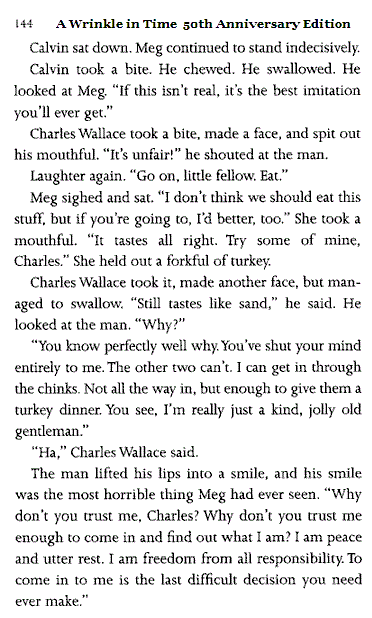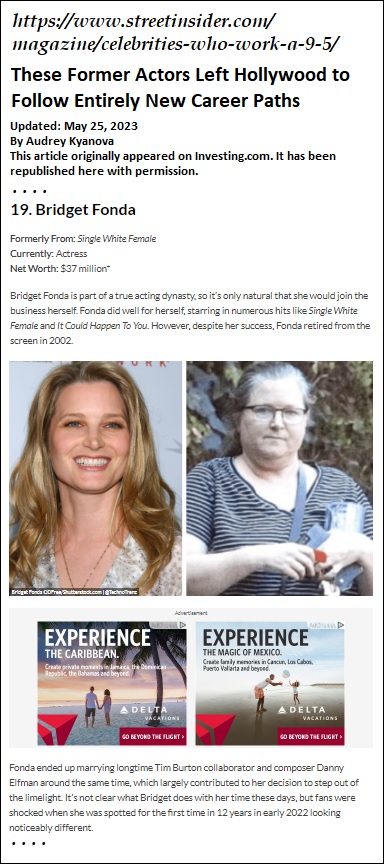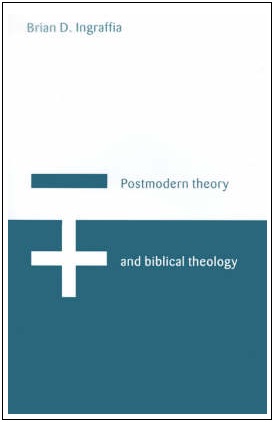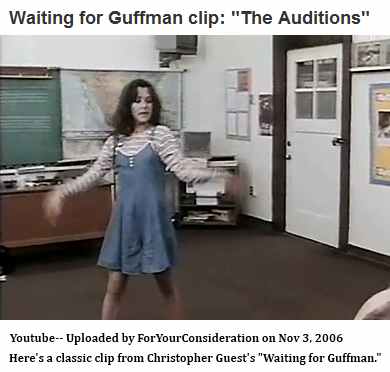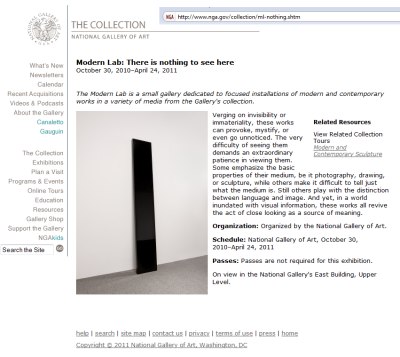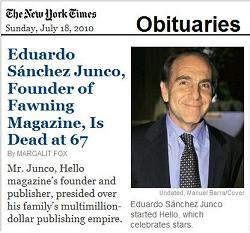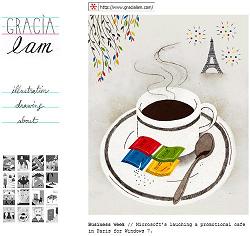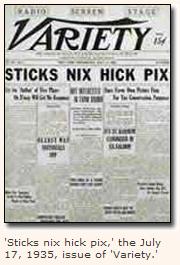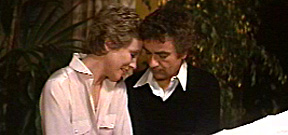See Hexagram 61 in this journal.
Sunday, August 27, 2023
For the Midnight Garden:
Hexagram 61 Revisited
Hexagram 61 Revisited
Sunday, July 10, 2022
Midnight in the Garden
Today's date — "10" or one-zero — suggests a review of base-16
(hexadecimal) notation. In hexadecimal, "10" means 16.
See as well some other Geek Lore.
Thursday, April 4, 2019
Wednesday, July 18, 2018
Thursday, March 2, 2017
Midnight in the Garden
(Continues, for Warren Beatty)

Howard Hughes in Spruce Goose

“A Passion that Kills,” by Markus Pierson (wood sculpture, 1988)
Tuesday, June 28, 2016
Saturday, April 9, 2016
Midnight in the Garden Continues
Wednesday, November 18, 2015
Midnight in the Garden
Saturday, July 11, 2015
Midnight in the Garden of Allah
From Universals Revisited, Leap Day, 2012 —
Wednesday, July 8, 2015
Midnight in the Garden
Blaine Gibson, Designer of Lifelike Robots
at Disney Parks, Dies at 97
Log24 remarks on Sunday, July 5, the reported date of
Gibson's death:
Thursday, March 19, 2015
Midnight in the Garden continues…
Saturday, June 14, 2014
Midnight in the Garden…
“The growth of consciousness is everything…
the seed of awareness sending its roots
across space and time. But it can grow in so many ways,
spinning its web from mind to mind like the spider
or burrowing into the unconscious darkness like the snake.
The biggest wars are the wars of thought.”
— Fritz Leiber, “The Oldest Soldier” (1960)
Update of 10 PM Saturday, June 14, 2014:
The first link above now leads to Log24 posts tagged
“Consciousness Growth.” This tag is used only to select
specific posts in this journal. It should not be seen as
related to any material of the sort one can find in
a Web search for “growth of consciousness.”
Monday, August 19, 2013
Midnight in the Garden
From a 2003 interview by Paul Devlin (PD) with poet John Hollander (JH),
who reportedly died Saturday—
|
PD: You wrote in the introduction to the new edition of Reflections on Espionage that whenever you have been "free of political callowness" it was partly as a result of reading W.H. Auden, George Orwell, and George Bernard Shaw. Do you think these writers might possibly be an antidote to political callowness that exists in much contemporary literary criticism? JH: If not they, then some other writers who can help one develop within one a skepticism strongly intertwined with passion, so that each can simultaneously check and reinforce the other. It provides great protection from being overcome by blind, true-believing zeal and corrupting cynicism (which may be two sides of the same false coin). Shaw was a great teacher for many in my generation. I started reading him when I was in sixth grade, and I responded strongly not only to the wit but to various modes, scene and occasions of argument and debate as they were framed by various kinds of dramatic situation. I remember being electrified when quite young by the moment in the epilogue scene of Saint Joan when the English chaplain, De Stogumber, who had been so zealous in urging for Joan’s being burned at the stake, returns to testify about how seeing her suffering the flames had made a changed man of him. The Inquisitor, Peter Cauchon, calls out (with what I imagined was a kind of moral distaste I’d never been aware of before), "Must then a Christ perish in torment in every age to save those who have no imagination?" It introduced me to a skepticism about the self-satisfaction of the born-again, of any persuasion. With Auden and Orwell, much later on and after my mental world had become more complicated, it was education in negotiating a living way between a destructively naïve idealism and the crackpot realism—equally inimical to the pragmatic. PD: Would you consider yourself a "formal" pragmatist, i.e., a student of Peirce, James, Dewey, Mead (etc.) or an "informal" pragmatist – someone taking the common-sense position on events…or someone who refuses to be pigeon-holed politically? JH: "Informal" – of the sort that often leads me to ask of theoretical formulations, "Yes, but what’s it for ?" PD: Which other authors do you think might help us negotiate between "naïve idealism" and "crackpot realism"? I think of Joyce, Wallace Stevens, perhaps Faulkner? JH: When I was in college, a strong teacher for just this question was Cervantes. One feels, in an Emersonian way, that the Don’s view of the world is correct at midnight, and Sancho’s at noon. |
Then there is mathematical realism.
A post in this journal on Saturday, the reported date of Hollander's death,
discussed a possible 21st-century application of 19th-century geometry.
For some background, see Peter J. Cameron's May 11, 2010, remarks
on Sylvester's duads and synthemes . The following figure from the
paper discussed here Saturday is related to figures in Cameron's remarks.

Wednesday, June 19, 2013
Wednesday, February 13, 2013
Midnight in the Garden
(Continued, to mark Tuesday's birthdays of Lincoln and Darwin.)
A British reporter who died at 97 on Tuesday is said to have
"covered the space race in its entirety." In his honor, here
in review are posts containing the phrase Space Race
and, more generally, the two words Galois + Space.
Tuesday, January 29, 2013
Midnight in the Garden
Thursday, February 16, 2012
Midnight in the Garden
(Continued from February 10.)
A passage suggested by the T.S. Eliot epigraphs in
Parallelisms of Compete Designs , by a weblog post
of Peter J. Cameron yesterday, and by this journal's
"Within You Without You" posts—

— Joseph Campbell, The Inner Reaches of Outer Space:
Metaphor as Myth and as Religion , New World Library,
Second Edition, St. Bridget's Day 2002, page 106
Tuesday, September 6, 2011
Midnight in the Garden (continued)
Saturday, June 18, 2011
Midnight in the Garden (continued)–
Tracking Shot

Related material—
See also this journal's September 2009 posts.
This post was suggested by today's previous post and by today's NY Lottery.
For some background to the ioncinema.com post numbered 4210 above,
see, in conjunction with the page headed "Azazel" linked to here earlier today,
the ioncinema.com post numbered 5601.
|
“Stranger, dreams verily are baffling and unclear of meaning, For two are the gates of shadowy dreams, But in my case it was not from thence, methinks, Translation by A.T. Murray, in two volumes. Quoted in a press release for the film "Two Gates of Sleep." |
From the post numbered 460 in this journal—
At the still point… from the film "Absolute Power" :

Photo credit – Graham Kuhn
I’ve heard of affairs that are strictly plutonic,
But diamonds are a girl’s best friend!
Tuesday, March 15, 2011
Midnight in the Garden (continued)
From Rough Magic , starring Russell Crowe and Bridget Fonda (1995)—
Bridget brought her rabbits,
There was magic in the air…
— Adapted from "Garden Party"—
Can't please everyone, so you
Got to please yourself.
From The Chronicles of Narnia, Voyage of the Dawn Treader—
"… Sometimes, perhaps, I am a little impatient, waiting for the day
when they can be governed by wisdom instead of this rough magic."
"All in good time, Coriakin," said Aslan.
"Yes, all in very good time, Sir," was the answer.
From Another Manic Monday (Feb. 21)—
We are now at the Year of the Rabbit —
(Click images for sources.)

|

|

|
|
Saturday, January 22, 2011
Midnight in the Garden continues…
Today's funeral Mass for Sargent Shriver,
tonight's review in the New York TImes of a singer
from the Kollege of Musical Knowledge,
and today's New York lottery numbers suggest the following links—
Sunday, November 14, 2010
Midnight in the Garden, continued

Detail from Google logo of Nov. 13, 2010
Related material: After Eden and Voyage of the Dawn Treader.
Tuesday, July 20, 2010
Midnight in the Garden continued
Lottery hermeneutics for yesterday's numbers—
PA— Midday 711, Evening 039.
NY— Midday 440, Evening 704.
Simple interpretive methods— numbers as dates and as hexagram numbers— yield 7/11, hexagram 39, and 7/04.
The reader may supply his own interpretations of 7/11 and 7/04; for hexagram 39, see Wilhelm's commentary—
"The hexagram pictures a dangerous abyss lying before us
and a steep, inaccessible mountain rising behind us."
— and the cover of Cold Mountain—

Adapted from cover of
German edition of Cold Mountain
This suggests revisiting The Edge of Eternity (July 5, 2005).
The hermeneutics of the NY midday 440 is more difficult. A Google search suggests that a Log24 post for Epiphany 2004, "720 in the Book," might yield a clue to the 440 riddle.
By all means, let us 440.
Saturday, October 27, 2012
Time in the Garden
“The voodoo priestess looked across the table at her wealthy client, a man on trial for murder:
‘Now, you know how dead time works. Dead time lasts for one hour– from half an hour
before midnight to half an hour after midnight. The half-hour before midnight is for doin’ good.
The half-hour after midnight is for doin’ evil….’”
– Glenna Whitley, “Voodoo Justice,” The New York Times , March 20, 1994
Sally Forth on September 5th, 2012—
Friday, December 16, 2011
Midnight in LA
The Sherlock Holmes film "A Game of Shadows"
is apparently showing around midnight
(12:00 AM PST, 3:00 AM EST) tonight in LA
at the ArcLight Hollywood.
This passage was quoted here on Sunday, November 27, this year.
For other words related to that date, see tonight's 11:02 post.
The serpent's eyes shine
As he wraps around the vine
In the Garden of Allah
— Don Henley
Monday, June 19, 2023
New Career Paths
"Experience the magic of Mexico." — Delta vacations ad.
See also Midnight in the Garden (March 15, 2011)
and New Day Nina (September 22, 2011).
Sunday, February 28, 2021
Thursday, January 21, 2021
Man Date
The New York Times this afternoon reports
the death of an author last year
“somewhere between May 2 and May 15.”
“Down and down I go, round and round I go”
— Kevin Spacey in the soundtrack album for
“Midnight in the Garden of Good and Evil”
Tuesday, October 27, 2020
“To Illustrate My Last Remark”*

* Song lyric, soundtrack album of
“Midnight in the Garden of Good and Evil“
Tuesday, September 16, 2014
Point of Reference
A note from the director of the 2014 Scarlett Johansson film Lucy :
Revised version of a post of February 9, 2006, with links repaired:
|
Space, Time, and Scarlett
From last night’s Grammy awards, lyrics:
“a place where there’s no space or time” Aguilera's version wasn't bad, but …
“Scarlett Johansson does this ‘old Hollywood glam’ look
For a reference to the place described in Russell’s lyrics, |
The "point of reference" outside space and time
in the 2006 Johansson post above is of course "265."
For Plato's remarks at this reference point, see Phaedrus
265d and 265e in this morning's post.
Monday, August 26, 2013
Dark Side Tales
"Got to keep the loonies on the path."
— Lyrics to Dark Side of the Moon
For those who, like Tom Stoppard, prefer the dark side—
|
NEW ANGLE:
INT. OFFICE BUILDING – NIGHT
NIGHT WATCHMAN
Bateman wheels around and shoots him.
NEW ANGLE:
INT. PIERCE & PIERCE LOBBY – NIGHT
— AMERICAN PSYCHO |
Not quite so dark—
"And then one day you find ten years have got behind you."
— Lyrics to Dark Side of the Moon
This journal ten years ago, on August 25, 2003—
|
… We seek
The poem of pure reality, untouched
At the exactest point at which it is itself,
The eye made clear of uncertainty, with the sight
Everything, the spirit's alchemicana
The solid, but the movable, the moment,
— Wallace Stevens, "An Ordinary Evening |
"A view of New Haven, say…." —
"This is the garden of Apollo,
the field of Reason…."
John Outram, architect
A similar version of this Apollonian image —

Detail:
![]()
Related material for the loonies:
Friday, March 15, 2013
Moran and Molloy
MORAN
MOLLOY
"I lived in the garden. I have spoken of a voice
telling me things. I was getting to know it better
now, to understand what it wanted. It did not
use the words that Moran had been taught
when he was little and that he in his turn had
taught to his little one. So that at first I did not
know what it wanted. But in the end I understood
this language. I understood it, I understood it,
all wrong perhaps. That is not what matters.
It told me to write the report. Does this mean
I am freer now than I was? I do not know.
I shall learn. Then I went back into the house
and wrote, It is midnight. The rain is beating on
the windows. It was not midnight. It was not
raining."
— Molloy , by Samuel Beckett
The above excerpts are in memory of some wordplay
in this journal on March 2, of a sneering joke in the
Daily Princetonian on March 11, and of a possible saint
who reportedly died around midnight on the night of
March 13-14.
See also the morning of March 13.
Note, at the end of the Princetonian piece, a comment
worthy of Beckett—
Wednesday, December 5, 2012
Mate
(Midnight in the Garden, continued)
E is for Ending …
Cullinane = Cullinan + E
And for Everlast.
(The Cullinan link above is to a woman
who apparently is the wife of writer
Alan Cowell. See The Revisiting, Dec. 3rd.)
Sunday, January 15, 2012
Sermon
"Accentuate the Positive."
— Clint Eastwood, soundtrack album for
"Midnight in the Garden of Good and Evil."
Thursday, October 20, 2011
Jack and Jill
The New Yorker 's online Book Bench has an entertaining
approach to Jack's "All work and no play…" in "The Shining."
For some background, see this morning's previous Log24
post, The Thing Itself.
That post gives some background for the
Midnight in the Garden post of September 6th.
Also on September 6th… See Jill.
Sunday, October 16, 2011
Spelling Brougham*
Related material—
Midnight in the Garden on the Ides of March and New Day Nina.
* For the title, see an historical note on October the 16th.
For a related novel, see Groundhog Day 2009.
Monday, July 25, 2011
The Game
Virginia Heffernan in Sunday's online New York Times—
"… In the past, information on paper was something to read. Bricks and mortar were a place to be. But, since the first appearance of the Web in 1990, we have come to accept that information in pixels is something to read— and also a place to be . That familiar and yet still jaw-dropping metaphor takes energy to maintain. The odd shared sense that there’s three-dimensionality and immersion and real-world consequences on the Web as in no book or board game— that’s the Web’s sine qua non. Hence, cyberspace . And 'being on' the Internet….
… The dominant social networks are fantasy games built around rigged avatars, outright fictions and a silent— and often unconscious— agreement among players that the game and its somewhat creaky conceits influence the real world…."
— "The Confidence Game at Google+"
"It's just another manic Monday
I wish it was Sunday
'Cause that's my funday"
— The Bangles
"Accentuate the Positive"
— Clint Eastwood, soundtrack album
for "Midnight in the Garden of Good and Evil"

This journal on All Saints' Day, Sunday, November 1, 2009—
|
Suggested by the New York State lottery numbers on All Hallows’ Eve [2009]— 430 (mid-day) and 168 (evening)… From 430 as a date, 4/30— Beyond Grief and Nothing: A Reading of Don DeLillo , by Joseph Dewey, University of South Carolina Press, 2006, page 123: “It is as if DeLillo himself had moved to an endgame….” For such an endgame, see yesterday’s link to a Mira Sorvino drama. The number 168 suggested by the Halloween lottery deals with the properties of space itself and requires a more detailed exegesis… For the full picture, consider the Log24 entries of Feb. 16-28 this year, esp. the entries of Feb. 27 and the phrase they suggest— Flores, flores para los muertos. |
See also Pearly Gates of Cyberspace in this journal.
For flores para los muertos , see today's Times .
Sunday, May 29, 2011
Every Picture Tells a Story
Background— Midnight's post.

This journal on the above "Take a Number" Dairy Queen date—
Saturday May 3, 2008“Teach us to
number our days.” The New Yorker,
issue dated Oct. 1, 2007 — “At any time, God can cancel a life. ‘So teach us to number our days,’ as the King James Version has it, ‘that we may apply our hearts unto wisdom.’….
The ancient Hebrew word for the shadowy underworld where the dead go, Sheol, was Christianized as ‘Hell,’ even though there is no such concept in the Hebrew Bible. Alter prefers the words ‘victory’ and ‘rescue’ as translations of yeshu’ah, and eschews the Christian version, which is the heavily loaded ‘salvation.’ And so on. Stripping his English of these artificial cleansers, Alter takes us back to the essence of the meaning. Suddenly, in a world without Heaven, Hell, the soul, and eternal salvation or redemption, the theological stakes seem more local and temporal: ‘So teach us to number our days.’” Today’s numbers from the
|
Sunday, April 10, 2011
Bedeviled
From tonight's online New York Times —
John McCracken, Sculptor of Geometric Forms, Dies at 76
McCracken died in Manhattan on Friday, April 8.
From Christopher Knight in tonight's online LA Times —
… the works embody perceptual and philosophical conundrums. The colored planks stand on the floor like sculptures….
McCracken was bedeviled by Stanley Kubrick's famously obscure science-fiction epic, "2001: A Space Odyssey," with its iconic image of an ancient monolith floating in outer space. The 1968 blockbuster was released two years after the artist made his first plank.
"At the time, some people thought I had designed the monolith or that it had been derived from my work," he told art critic Frances Colpitt of the coincidence in a 1998 interview.
Two photos of McCracken's 1967 Black Plank seem relevant—
November 28, 2010 (Click to enlarge) —
December 28, 2010 (Click to enlarge) —
Material that an artist might view as related, if only synchronistically—
Two posts in this journal on the dates the photos were taken—
The Embedding on November 28 and Dry Bones on December 28.
The photos are of an exhibition titled "There is nothing to see here" at the
National Gallery of Art, October 30, 2010-April 24, 2011 —
For related nihilism from the National Gallery, see "Pictures of Nothing" in this journal.
Some less nihilistic illustrations—

A photo by one of the artists whose work is displayed above beside McCracken's—

"Accentuate the Positive."
— Clint Eastwood
Monday, July 26, 2010
Brightness at Noon continued
Riddle
"Midnight in the Garden continued," a post of 12:00 AM July 20, posed the riddle of what the previous day's NY Lottery midday "440" might mean.
A jocular answer was given. Some background for a more serious answer—
Paul Newall, “Kieślowski’s Three Colours Trilogy”—
“Julie recognises the music of the busker outside playing a recorder as that of her husband’s. When she asks him where he heard it, he replies that he makes up all sorts of things. This is an instance of a theory of Kieślowski’s that ‘different people, in different places, are thinking the same thing but for different reasons.’ With regard to music in particular, he held what might be characterised as a Platonic view according to which notes pre-exist and are picked out and assembled by people. That these can accord with one another is a sign of what connects people, or so he believed.”
In honor of Wye Jamison Allanbrook, author of Rhythmic Gesture in Mozart, we note that 440 is Concert A.
Allanbrook died on July 15. See this journal on that date—
Angels in the Architecture,
Happy Birthday, and
Brightness at Noon.
Sunday, July 18, 2010
A Tale of Two Cities
Madrid
Junco died on Bastille Day.
Paris
An artist's view —
The above Gracia Lam illustration was suggested
by her work in a New York Times piece on the Sabbath
(Sunday, July 18, 2010, on page ST1 of the New York edition).
"Accentuate the Positive." — Clint Eastwood
Wednesday, September 30, 2009
Wednesday September 30, 2009
Midnight in the Garden, Autumn 2009
Review:
|
From this journal on the following day, Sept. 21:
Happy birthday, Stephen King.
Today's previous entry is based on a song, "Unthought Known,"
from the above album; the cover of the album uses the 3×3 grid
shown in Sept. 20's midnight review. For related material
on the unconscious, see June 13-15, 2005.
I know more than Apollo,
For oft when he lies sleeping
I see the stars at mortal wars
In the wounded welkin weeping.
Friday, June 19, 2009
Friday, March 13, 2009
Friday March 13, 2009
From 12:00 AM on last month’s
Friday the 13th:

From the soundtrack CD of
“Midnight in the Garden
of Good and Evil”–
“Accentuate the positive.”
— Clint Eastwood
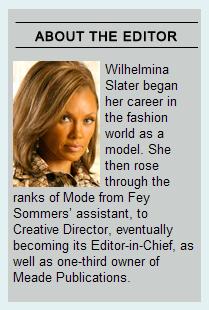 |
My advice for this month is to learn the lesson from the young and innocent. Embrace optimism and go forward with life, hoping only for the best…. Accentuate your positives and don’t worry about your negatives…. Because when you smile, others smile back.
Wilhelmina Slater |
Tuesday, March 3, 2009
Tuesday March 3, 2009
in the Garden
continues
Click poster for details.
Click image for details.
Related material:
The three entries here on
the date of Quarry’s death:
A Kind of Cross, and
Wednesday, February 25, 2009
Wednesday February 25, 2009
“Dead time lasts for one hour– from half an hour before midnight to half an hour after midnight. The half-hour before midnight is for doin’ good.”
— Glenna Whitley, “Voodoo Justice,” The New York Times, March 20, 1994
Friday, February 13, 2009
Friday February 13, 2009
King Friday XIII
and friend:

Yesterday, by the way,
was Georgia Day
in Savannah.

“I Put a Spell on You”
— Nina Simone,
title of autobiograpy
“The voodoo priestess looked across the table at her wealthy client, a man on trial for murder: ‘Now, you know how dead time works. Dead time lasts for one hour– from half an hour before midnight to half an hour after midnight. The half-hour before midnight is for doin’ good. The half-hour after midnight is for doin’ evil….'”
— Glenna Whitley, “Voodoo Justice,” The New York Times, March 20, 1994
Friday, July 6, 2007
Friday July 6, 2007
of Good and Evil
continued from
Midsummer Night…
— Glenna Whitley, “Voodoo Justice,”
The New York Times, March 20, 1994

In Other Game News:
“Coxeter Exhuming Geometry”
suggests the following
illustration, based
in part on
Plato’s poem to Aster:

Related material:
and
The proportions of
the above rectangle
may suggest to some
a coffin; they are
meant to suggest
a monolith.
Sunday, June 24, 2007
Sunday June 24, 2007
in the Garden
of Good and Evil

"I Put a Spell on You"
— Nina Simone,
title of autobiograpy
— Glenna Whitley, "Voodoo Justice," The New York Times, March 20, 1994
"But what's happening is that each year our old flat earth of conventional reason becomes less and less adequate to handle the experiences we have and this is creating widespread feelings of topsy-turviness. As a result we're getting more and more people in irrational areas of thought… occultism, mysticism, drug changes and the like… because they feel the inadequacy of classical reason to handle what they know are real experiences."
"I'm not sure what you mean by classical reason."
"Analytic reason, dialectic reason. Reason which at the University is sometimes considered to be the whole of understanding. You've never had to understand it really. It's always been completely bankrupt with regard to abstract art. Nonrepresentative art is one of the root experiences I'm talking about. Some people still condemn it because it doesn’t make 'sense.' But what's really wrong is not the art but the 'sense,' the classical reason, which can't grasp it. People keep looking for branch extensions of reason that will cover art's more recent occurrences, but the answers aren't in the branches, they're at the roots."

Related material:
D-Day Morning,
Figures of Speech,
Ursprache Revisited.
See also
the midnight entry
of June 23-24, 2006:
"Let the midnight special
shine her light on me."

Saturday, June 23, 2007
Saturday June 23, 2007
the Lost Stone
continued from March 10, 2006
The Roman Imperial Eagle
and, according to
C. B. DeMille in 1932 —
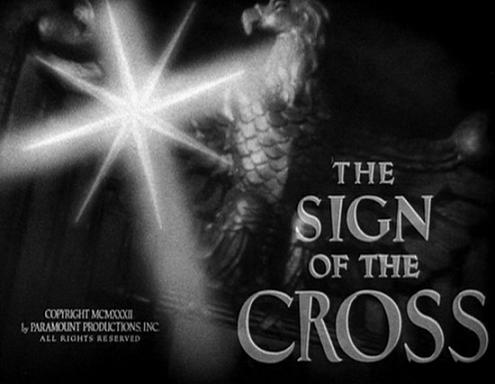
The above photo is courtesy of
the Cecil B. DeMille Collection
at DVD Beaver.

HARVARD CRIMSON/ ALEX R. LEVIN
Sharon Stone lectures at
Harvard’s Memorial Church
on March 14, 2005…
Related material —
Log24, Oct. 26, 2002 —
Midnight in the Garden,
starring

Sunday, April 8, 2007
Sunday April 8, 2007
continued from Sept. 30, 2004
Tonight this journal had two Xanga footprints from Italy….
At 11:34 PM ET a visitor from Italy viewed a page containing an entry from Jan. 8, 2005, Splendor of the Light, which offers the following quotation–
From an essay on Guy Davenport—
"A disciple of Ezra Pound, he adapts to the short story the ideogrammatic method of The Cantos, where a grammar of images, emblems, and symbols replaces that of logical sequence. This grammar allows for the grafting of particulars into a congeries of implied relation without subordination. In contrast to postmodernists, Davenport does not omit causal connection and linear narrative continuity for the sake of an aleatory play of signification but in order to intimate by combinational logic kinships and correspondences among eras, ideas and forces."
— "When Novelists Become Cubists: The Prose Ideograms of Guy Davenport," by Andre Furlani
The visitor from Italy may, of course, have instead intended to view one of the four earlier entries on the page. In particular, the visitor may have seen

The Star
of Venus
"He looked at the fading light
in the western sky and saw Mercury,
or perhaps it was Venus,
gleaming at him as the evening star.
Darkness and light,
the old man thought.
It is what every hero legend is about.
The darkness which is more than death,
the light which is love, like our friend
Venus here, or perhaps this star is
Mercury, the messenger of Olympus,
the bringer of hope."
— Roderick MacLeish, Prince Ombra.
At 11:38 PM ET, a visitor from Italy (very likely the 11:34 visitor returning) viewed the five Log24 entries ending at 12:06 AM ET on Sept. 30, 2004.
These entries included Midnight in the Garden and…
A Tune for Michaelmas

The entries on this second visited page also included some remarks on Dante, on time, and on Malcolm Lowry's Under the Volcano that are relevant to Log24 entries earlier this week on Maundy Thursday and on Holy Saturday.
Here's wishing a happy Easter to Italy, to Francis Ford Coppola and Russell Crowe (see yesterday's entry), and to Steven Spielberg (see the Easter page of April 20, 2003).
Image courtesy of
Hollywood Jesus:
When you wish
upon a star…
Wednesday, June 28, 2006
Wednesday June 28, 2006
John Cusack is 40,
Mel Brooks is 80.

(See midnight on
Midsummer’s Eve.)
“Like Gone with the Wind
on mescaline”
— a description of Savannah
Noon
in the Garden of
Good and Evil:

Related material
from December 2005:
Intelligence/Counterintelligence,
Prequel on St. Cecilia’s Day,
Intelligence/Counterintelligence
Continued
Sunday, March 26, 2006
Sunday March 26, 2006
continued
Questions posed by
Roberta Smith in the
New York Times
of Jan. 13, 2006:
“‘What is art?’ may be the
art world’s most relentlessly asked
question. But a more pertinent one
right now is, ‘What is an art gallery?'”
— from “Who Needs a
White Cube These Days?“

An example that may help:
London’s White Cube gallery
and its current Liza Lou exhibit,
which is said to convey
“a palpable sense of use,
damage, lost time, lost lives.”
See the previous entry for details.
On the brighter side, we have
“Midnight in the Garden
of Good and Evil”
soundtrack CD—
“Accentuate the positive”–
and an entry from last Christmas:
|
Compare and contrast:
(Click on pictures
for details.)
|
“Recollect what I have said to you,
that this world is a comedy
to those who think,
a tragedy to those who feel.
This is the quint-essence of all
I have learnt in fifty years!”
— Horace Walpole,
letter to Horace Mann,
5 March, 1772
Friday, March 17, 2006
Friday March 17, 2006
State of Grace
“Words and numbers are of equal value,
for, in the cloak of knowledge,
one is warp and the other woof.”
— The princesses Rhyme and Reason
in The Phantom Tollbooth,
by Norton Juster, 1961
(From a Sermon for
St. Patrick’s Day, 2001)
The Pennsylvania midday lottery
on St. Patrick’s Day, 2006:
618.
x2 – x – 1 = 0


Or we may, with Miles Davis, prefer a more sensuous incarnation of the keys:
“… it’s going to be
accomplished in steps,
this establishment
of the Talented in
the scheme of things.”
— Anne McCaffrey,
Radcliffe ’47,
To Ride Pegasus
Thursday, February 9, 2006
Thursday February 9, 2006
Space, Time, and Scarlett
From last night’s Grammy awards, lyrics performed by Christina Aguilera and Herbie Hancock:
“a place where there’s no space or time”
— Leon Russell
Not bad, but as Kat358 noted on May 4, 2005,
“Scarlett Johansson does this ‘old Hollywood glam’ look much better.”
For a reference to the place described in Russell’s lyrics, see the riff on the number “265”
linked to in last night’s “Midnight in the Garden of the Soul.”
Related material– Jazz Improvisation:
“Once an appropriate group of people has been assembled, you must decide what to play.”
Thursday February 9, 2006
of the Soul
(continued)This time slot, reserved at midnight,
seems to belong to Frank Goodman,
who, according to this morning’s
(3 AM) New York Times, was
“one of the last of the old-time
Broadway press agents.”
Related material:
Yesterday afternoon’s entry
on a fictional “press agent
for ‘The Garden of the Soul,'”
and the entry on death
and gardens from Friday,
Feb. 3, 2006, the day
Frank Goodman died.
Saturday, May 28, 2005
Saturday May 28, 2005
Midnight in the Garden,
continued:
Today's birthdays:
Kylie Minogue and John Fogerty.
Get well soon, Bad Moon.
And in memory of Eddie Albert,
a talented actor who died
on Thursday, May 26, 2005,
at his home in California
and was born on April 22, 1906,
in Rock Island, Illinois:
Well if you want to ride
you gotta ride it like you find it.
Get your ticket at the station
of the Rock Island Line.

Among his films:
Wednesday, May 25, 2005
Wednesday May 25, 2005
continued
“Poetry is a satisfying of
the desire for resemblance….
If resemblance is described as
a partial similarity between
two dissimilar things,
it complements and reinforces
that which the two dissimilar things
have in common.
It makes it brilliant.”
— Wallace Stevens,
“Three Academic Pieces” in
The Necessary Angel (1951)
Two dissimilar things:
1. A talk to be given at a conference on “Mathematics and Narrative” in Mykonos in July:
Mark Turner,
“The Role of Narrative Imagining in Blended Mathematical Concepts” —
Abstract:
“The Way We Think (Gilles Fauconnier and Mark Turner; Basic Books, 2002) presents a theory of conceptual integration, or “blending,” as a basic mental operation. See http://blending.stanford.edu. This talk will explore some ways in which narrative imagining plays a role in blended mathematical concepts.”
2. An application of the “conceptual blending” of Fauconnier and Turner to some journal entries of 2004: Cognitive Blending and the Two Cultures.
Thursday, March 17, 2005
Thursday March 17, 2005
Midnight Drums for Larry
The Harvard Crimson, March 16:
"Voting by secret ballot in a Faculty meeting at the Loeb Drama Center, 218 faculty members affirmed a motion put on the docket by Professor of Anthropology and of African and African American Studies J. Lorand Matory ’82, stating that 'the Faculty lacks confidence in the leadership of Lawrence H. Summers.' "
Harvard Faculty of Arts and Sciences:
Professor Matory is "a renowned expert on Brazil and on the Yoruba civilization of West Africa, which is world famous for its religious complexity and artistic creativity. He is equally noted for his study of such Latin American religions as Haitian 'Vodu,' Brazilian Candomblé, and Cuban Santería…."
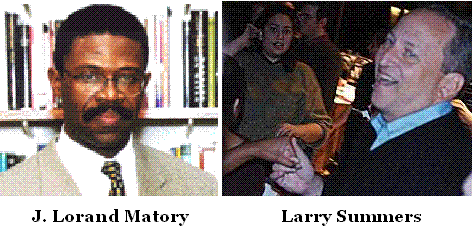
The Harvard Crimson, January 7, 2005:
"I came here with the goal of dancing with Larry Summers, and I did it," Chinwe U. Nwosu ’08 said. "He’s a great dancer."
"Now I can say that 'Bootylicious' is our song," she added.
"Atabaque – a large tom-tom
that is used in Afro-Brazilian
religious celebrations"
— The Sounds of Samba
at Yale

— From Log24.net, Oct. 16, 2004:
Saturday, December 4, 2004
Saturday December 4, 2004
From Midnight, Dec. 28, 2002:
|
Kylie |
Our site music for today is Ravel’s classic, “Bolero.” For bolero purposes, some may prefer Kylie Minogue’s rendition of “Locomotion.” |
Related material:
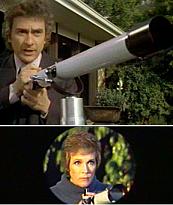 |
|
From a synopsis of Cinderella:
“Cinderella is in the Palace garden and is found by the Prince, who is dejected at the lack of success in the quest and throws the slipper away. Happily the Godmother (hidden in the bushes) catches it and replaces it on the bench next to the Prince, just as he remembers he should try it on Cinderella.
Saturday, October 16, 2004
Saturday October 16, 2004
Midnight in the Garden
continued
|
Umberto Eco, Here, too, you entered through a little garden… Amparo drew me aside as we went in. “I’ve figured it out,” she said. “That tapir at the lecture talked about the Aryan age, remember? And this one talks about the decline of the West. Blut und Boden, blood and earth. It’s pure Nazism.” “It’s not that simple, darling. This is a different continent.”…. If the outside was seedy, the inside was a blaze of violent colors. It was a quadrangular hall, with one area set aside for the dancing of the cavalos. The altar was at the far end, protected by a railing, against which stood the platform for the drums, the atabaques. The ritual space was still empty…. |
“Atabaque – a large tom-tom
that is used in Afro-Brazilian
religious celebrations”
— The Sounds of Samba
at Yale

“Of African origin, and made of jacarandá wood in a conical shape. A calfskin head covers the top of the drum. It is used a lot in capoeria and candomblé and umbanda rituals all over Brazil. There are three kinds of atabaques: Rum, Rumpi, and Lê. Rum has the deepest sound and is a solo drum; Rumpi has a medium sound, and Lê is the highest. These three hold the beat.”
Like the beat, beat, beat of the tom-tom….
— Cole Porter, “Night and Day“
|
Your feats end enormous, In the name of the former |
Thursday, September 30, 2004
Thursday September 30, 2004
Midnight in the Garden
“With a little effort,
anything can be shown
to connect with anything else:
existence is infinitely
cross-referenced.”
— Opening sentence
of Martha Cooley’s
The Archivist
|
Woe unto Isaiah 5:20 |
As she spoke |
The world Cole Porter |
 Example:
Example:
Mozart’s K 265,
the page number 265,
and a story by George MacDonald.
Tuesday, August 17, 2004
Tuesday August 17, 2004
The Zen of Abraham
Today’s Zen Chautauqua, prompted by the fact that this is Abrahamic week at the real Chautauqua, consists of links to
Happy Birthday, Kate and Kevin.
The real Chautauqua’s program this week is, of course, Christian rather than Zen. Its theme is “Building a Global Neighborhood: The Abrahamic Vision 2004.” One of the featured performers is Loretta Lynn; in her honor (and, of course, that of Sissy Spacek), I will try to overcome the fear and loathing that the Semitic (i. e., “Abrahamic”) religions usually inspire in me.
To a mathematician, the phrase “global neighborhood” sounds like meaningless politico-religious bullshit — a phrase I am sure accurately characterizes most of the discourse at Chautauqua this week. But a Google search reveals an area of

This article includes the following:

Given the sophistication of his writing, I am surprised at Schlansker’s Christian background:
A good omen for the future is the fact that Schlansker balances the looney Semitic (or “Abrahamic”) teachings of Christianity with good sound Aryan religion, in the form of the goddess Themis.

Themis, often depicted as “Justice”
For those who must have an Abraham, Schlansker’s paper includes the following:

A Themis figure I prefer to the above:

For more on religious justice
at midnight in the garden of
good and evil, see the Log24
entries of Oct. 1-15, 2002.
For material on Aryan religion that is far superior to the damned nonsense at Chautauqua, New York, this week, see
Jane Ellen Harrison’s Themis: a Study of the Social Origins of Greek Religion, with an excursus on the ritual forms preserved in Greek tragedy by Gilbert Murray and a chapter on the origin of the Olympic games by F. M. Cornford. Rev. 2nd ed., Cambridge, Cambridge U.P., 1927.
Those who prefer the modern religion of Scientism will of course believe that Themis is purely imaginary, and that truth is to be found in modern myths like that of Carl Sagan’s novel Contact, illustrated below.
Jodie Foster (an admirer of
Leni Riefenstahl) and the
opening of the 1936 Olympics
“Heraclitus…. says: ‘The ruler whose prophecy occurs at Delphi oute legei oute kryptei, neither gathers nor hides, alla semainei, but gives hints.'”
— An Introduction to Metaphysics, by Martin Heidegger, Yale University Press paperback, 1959, p. 170
“The lord whose oracle is in Delphi neither indicates clearly nor conceals, but gives a sign.”
— Adolf Holl, The Left Hand of God, Doubleday, 1998, p. 50
Tuesday, May 4, 2004
Tuesday May 4, 2004
Midnight in the Garden of
Good and Evil, continued
Buddies Show Us
the Real Tillman
![]()
By MARK PURDY![]()
San Jose Mercury News
SAN JOSE, Calif. – Once the out-of-towners stopped talking, the people from San Jose were allowed to speak. And the honesty erupted.
“Thank you for coming,” said Richard Tillman, the younger brother of Pat Tillman. “But with all respect to those who have been up here before me, Pat’s not with God. He’s not religious. He’s dead. It was amazing to be his little brother. He was the biggest champion I’ve ever seen.”
Commentary:
Maybe God doesn’t like religious people.
See The Four Last Things (6/4/03),
With Honors (6/5/03), and
Directions Out (4/26/04).
Thursday, April 22, 2004
Thursday April 22, 2004
Inscape

Picture said to be of
a Japanese Skylark,
Hibari or Alauda japonica.
Photo: 05/2002, Nagano, Japan.
|
A false definition of “inscape”: Brad Leithauser, New York Review of Books, April 29, 2004: “Not surprisingly, most Hopkins criticism is secular at heart, though without always acknowledging just how distorted—how weirdly misguided— Hopkins himself would find all interpretations of a spiritual life that were drawn purely from the outside. For him, a failure to see how divine promptings informed his shaping internal life—his ‘inscape,’ his own term for it—was to miss everything of his life that mattered.” “By ‘inscape’ he [Hopkins] means the unified complex of characteristics that give each thing its uniqueness and that differentiate it from other things.” A false invocation of the Lord: Brad Leithauser, New York Review of Books, Sept. 26, 2002: “I’d always thought ‘Skylark’ quite appealing, but it wasn’t until I heard Helen Forrest singing it, in a 1942 recording with Harry James and his Orchestra, that it became for me something far more: one of the greatest popular songs anybody ever wrote. With her modest delivery, a voice coaxing and plaintive, Forrest is a Little Girl Lost who always finds herself coming down on exactly the right note—no easy thing with a song of such unexpected chromatic turns. On paper, the Johnny Mercer lyric looks unpromising—antiquated and clunky:
But in Helen Forrest’s performance, ‘Skylark’ turns out to be a perfect blend of pokiness and urgency, folksiness and ethereality—and all so convincing that it isn’t until the song is finished that you step back and say, ‘Good Lord, she’s singing to a bird!’ “ For Hopkins at midnight in the garden of good and evil, a truer invocation:
Friday, December 27, 2002 Saint Hoagy’s Day Today is the feast day of St. Hoagy Carmichael, who was born on the feast day of Cecelia, patron saint of music. This midnight’s site music is “Stardust,” by Carmichael (lyrics by Mitchell Parish). See also “Dead Poets Society” — my entry of Friday, December 13, on the Carmichael song “Skylark” — and the entry “Rhyme Scheme” of later that same day. |
Wednesday, April 23, 2003
Wednesday April 23, 2003
Midnight in the Garden
of Good and Evil
on Shakespeare’s Birthday
Tony Scherman on an April 7, 1968, recording by Nina Simone:
“…nobody could telescope more emotion into a single, idiosyncratically turned syllable (listen to the way she says the word “Savannah” in her spoken intro to “Sunday in Savannah.” It breaks your heart — and she ain’t even singin’ yet!).”
See also the following entries on midnight in the garden:
Trinity, Oct. 25, 2002
Midnight in the Garden, Oct. 26, 2002
Point of No Return, Dec. 10, 2002
Culture Clash at Midnight, Dec. 11, 2002
Dead Poets Society, Dec. 13, 2002
For the Dark Lady, Dec. 18, 2002
Nightmare Alley, Dec. 21, 2002
For the Green Lady, Dec. 21, 2002
“With a little effort, anything can be shown to connect with anything else: existence is infinitely cross-referenced.”
— Opening sentence of Martha Cooley’s The Archivist
|
Woe unto Isaiah 5:20
|

As she spoke about the Trees of Life and Death, I watched her…. |
The world Cole Porter
|
Thursday, January 2, 2003
Thursday January 2, 2003
Faces of the Twentieth Century:
The Harvest Continues
“I walk, I lift up, I lift up heart, eyes,
Down all that glory in the heavens to glean our Saviour;
And, éyes, héart, what looks, what lips yet gave you a
Rapturous love’s greeting of realer, of rounder replies?”
— Gerard Manley Hopkins, “Hurrahing in Harvest”
|
|
|
“Cowboy, take me away.
Fly this girl as high as you can
into the wild blue.”
See
“Culture Clash at Midnight in the Garden of Good and Evil“
in my notes of December 11, 2002.
Saturday, December 21, 2002
Saturday December 21, 2002
For the Green Lady
of Perelandra,
from the City of Angels
“The oral history of Los Angeles
is written in piano bars.”
— Joan Didion in Slouching Towards Bethlehem![]()
Tonight’s midnight music in the garden of good and evil is a shamelessly romantic classic from a site titled simply Piano Bar.
De Rêve En Rêverie
(Lyrics by Eddy Marnay)
Tu es le pianiste
Et moi je suis ton encore.
Un feu de joie pour deux
Tombe sur nous d’un ciel amoureux.
Toi, toi qui m’as tout appris
Moi, dans l’ombre de ta vie
Je vis,
Je vis de rêve
En rêverie.
![]() Washington Square Press paperback, 1981, page 222
Washington Square Press paperback, 1981, page 222
Wednesday, December 18, 2002
Wednesday December 18, 2002
For the Dark Lady
On this midnight in the garden of good and evil, our new site music is “Nica’s Dream.”
From a website on composer Horace Silver:
“Horace Silver apparently composed Nica’s Dream (1956) for Baroness Pannonica de Koenigswarter-Rothschild, an English aristocrat and a very dear friend of his. She was known to the New York press as the Jazz Baroness and to the black musicians for whom she was something of a patron, simply as Nica. Her apartment in the fashionable Hotel Stanhope on Fifth Avenue became a ‘hospitality suite for some of the greatest jazz players of the day, whom she treated generously.’ (Jack Chambers, Milestones: The Music and Times of Miles Davis, University of Toronto Press, 1985, 1:248)
This music is not unrelated to the work of Thomas Pynchon. From an essay by Charles Hollander:
“There are some notable parallels between Nica and the woman Stencil knows as V., who started her career with ‘…a young crude Mata Hari act.’ (V.; 386)…. Not that V. is Nica in any roman a clef sense: she is not. But the resonances are powerful at the level of the subtext. Nica is a Rothschild whose life reflects the issues Pynchon wants us to attend in V.: disinheritance, old dynasty vs. new dynasty, secret agents and couriers, plots and counter-plots, ‘The Big One, the century’s master cabal,’ and ‘the ultimate Plot Which Has No Name’ (V.; 226)….”
See also my journal entry for the December 16-17 midnight, “Just Seventeen.”
Friday, December 13, 2002
Friday December 13, 2002
Dead Poets Society
Man’s spirit will be flesh-bound, when found at best,
But úncúmberèd: meadow-dówn is nót distréssed
For a ráinbow fóoting it nor hé for his bónes rísen.
Gerard Manley Hopkins,
Society of Jesus
In accordance with this sentiment,
this midnight in the garden of good and evil
is the occasion for a change of site music
to “Skylark,” by Hoagy Carmichael
(lyrics by Johnny Mercer).
Wednesday, December 11, 2002
Wednesday December 11, 2002
Culture Clash at Midnight
in the Garden of Good and Evil
|
From the Catholic Church: |
From Paris, Texas: |
In a future life, if not in this one, Dante might assign these two theologians to Purgatory, where they could teach one another. Both might benefit if Shepard took Apczynski’s course “The Intellectual Journey” and if Apczynski read Shepard’s new book of short stories, Great Dream of Heaven.
Background music might consist of Sinatra singing “Three Coins in the Fountain” (for Shepard — See my journal notes of December 10, 2002) alternating with the Dixie Chicks singing “Cowboy, Take Me Away” (for Apczynski, who is perhaps unfamiliar with life on the range). Today’s site music is this fervent prayer by the Dixie Chicks to a cowboy-theologian like Shepard.
Tuesday, December 10, 2002
Tuesday December 10, 2002
Point of No Return
From Dr. Mac’s Cultural Calendar for December 10:
- On this day in 1864, General William T. Sherman’s Union army reached Savannah and the 12-day siege began. Sherman was able to present the city to President Lincoln as a “Christmas present.”
An album recorded in September 1961:

Songs in the above list:
September Song * When the World was Young
I’ll Be Seeing You * I’ll See You Again
Memories of You * There Will Never Be Another You
Somewhere Along the Way * A Million Dreams Ago
It’s a Blue World * I’ll Remember April
These Foolish Things
Not in the list, but in the album:
As Time Goes By
The Savannah Connection:

Augustus Saint-Gaudens
William Tecumseh Sherman,
1892-1903 (installed 1903)
Central Park, New York City
From
by Wallace Stevens
(New York: Knopf, 1951)
(New York: Vintage Books, 1966):
“The theory of poetry, that is to say, the total of the theories of poetry, often seems to become in time a mystical theology or, more simply, a mystique. The reason for this must by now be clear. The reason is the same reason why the pictures in a museum of modern art often seem to become in time a mystical aesthetic, a prodigious search of appearance, as if to find a way of saying and of establishing that all things, whether below or above appearance, are one and that it is only through reality, in which they are reflected or, it may be, joined together, that we can reach them. Under such stress, reality changes from substance to subtlety….”
Part of a journal entry for
October 25, 2002:
|
Trinity See… Bonaventure’s
a graves list for Bonaventure Cemetery in Savannah, |
Point of No Return was Sinatra’s
last album for Capitol.
Note the strategic placement
of the Capitol Records logo
on the album cover.
Saturday, October 26, 2002
Saturday October 26, 2002
Midnight in the Garden
From a Nina Simone Lyrics site:
Pack up all my cares and woe,
here I go, singing low,
Bye-bye Blackbird.
Where somebody waits for me,
sugar’s sweet, so is she,
Bye-bye Blackbird.
No one here can love and understand me.
Oh, what hard-luck stories they all hand me.
Make my bed and light the light,
I’ll arrive late tonight,
Blackbird, Bye-bye.
For more on the eight-point star of Venus,
see “Bright Star,” my note of October 23.
Friday, October 25, 2002
Friday October 25, 2002
Trinity
The last two days were eventful on the obituary front. See below for a reasonably holy trinity of lives:
- Richard Helms as the Father,
- Derek Bell as the Son, and
- Adolph Green as the Holy Spirit.
See also Bonaventure’s
Itinerarium Mentis in Deum and

the graves list for Bonaventure Cemetery in Savannah,
final resting place for Johnny Mercer and plot key
to Midnight in the Garden of Good and Evil.
Saturday, September 14, 2002
Saturday September 14, 2002
God Is Her Co-Pilot
On the soundtrack album of "Midnight in the Garden of Good and Evil," Clint Eastwood advised us to "eliminate the negative." As a sequel to the extremely negative note below, written at midnight on the night of September 13-14, 2002, the following is my best attempt, on this very dark night of the soul, to eliminate the negative.
Some of us are old enough to recall that the beloved Grace Kelly, Princess of Monaco, died on September 14, 1982 — exactly 20 years ago — from injuries she suffered in a car accident the day before. The following photo recalls happier days of driving the Riviera, in the 1955 film "To Catch a Thief."

This note's title, combined with the photo, suggests that I have a mystical vision of Cary Grant as God. I can think of worse people to play God. The best I can do tonight to eliminate the negative is transcribe the remarks I made in a (paper) journal entry in 1997. (By the way, I realize that ordinary people are just as important as movie stars, but the latter are more suitable for public discussion.)
In memoriam: Robert Mitchum and James Stewart
Eternal Triangles (July 3, 1997)
Every civilization tells its own story about the relations between heaven and earth. Some of the best stories — those of Lao Tsu, the Greek poets, and Buddha — are now almost 26 centuries old. Some even older stories — those told by the Jews — have enabled our current civilization, led by Charlton Heston as God, to outlast Hitler, Stalin, and Mao. However, recent claims of Absolute Truth for these stories (The Bible Code) are disturbing. Perhaps it is time — at least for Robert Mitchum and James Stewart — to meet a kinder, gentler God.
I propose Cary Grant — specifically, as seen in "The Grass is Greener" (1960) with Mitchum and Deborah Kerr, and in "The Philadelphia Story" (1940) with Stewart and Katharine Hepburn. If we imagine Grant as God, then these films reveal a very old, always entertaining, and sometimes enlightening version of the Trinity: God and Man as rivals for the Holy Spirit — as played by Deborah, by Kate, and (in heaven) by Grace. Such a spirit, at work in the real world, may have influenced two of this century's better Bibles:
-
The Oxford Book of English Prose (1925, reprinted through 1958), and
-
"LIFE — The 60th Anniversary Issue" (October 1996)
From (1), for Mitchum's memorial, Deborah might pick "The Basket of Roses" (pp. 1057-1060). From (2), for Stewart's memorial, Kate might select the page of LIFE's covers for 1941 — and all that page implies.
Finally, Grace, in the Highest society (beyond Bibles) might recall the following telegraphic catechism:
Q. — How old Cary Grant?
A. — Old Cary Grant fine. How you?
Friday, September 13, 2002
Friday September 13, 2002
Meditation for Friday the 13th
The 1946 British film below (released as “Stairway to Heaven” in the U.S.) is one of my favorites. I saw it as a child. Since costar Kim Hunter died this week (on 9/11), and since today is Friday the 13th, the following material seems relevant.
|
Kim Hunter in 1946 |
R.A.F pilot and psychiatrist
Alan McGlashan |
Alan McGlashan has practiced as a psychiatrist in London for more than forty years. He also served as a pilot for the R.A.F. (with MC and Croix de Guerre decorations). |
The doctor in “A Matter of Life and Death” addresses a heavenly court on behalf of his patient, R.A.F pilot David Niven:
 |
In the film, David Niven is saved by mistake from a fated death and his doctor must argue to a heavenly court that he be allowed to live. |
In a similar situation, I would want Dr. Alan McGlashan, a real-life psychiatrist, on my side. For an excerpt from one of my favorite books, McGlashan’s The Savage and Beautiful Country,
As Walker Percy has observed (see my Sept. 7 note, “The Boys from Uruguay”), a characteristic activity of human beings is what Percy called “symbol-mongering.” In honor of today’s anniversary of the births of two R.A.F. fighter pilots,
Sir Peter Guy Wykeham-Barnes (b. 1915) and author
Roald Dahl (b. 1916),
here is one of the better symbols of the past century:

The circle is of course a universal symbol, and can be made to mean just about whatever one wants it to mean. In keeping with Clint Eastwood’s advice, in the soundtrack album for “Midnight in the Garden of Good and Evil,” to “accentuate the positive,” here are some positive observations on a circle from the poet (and perhaps saint) Dante, who died on the night of September 13-14:
In the sun, Dante and Beatrice find themselves surrounded by a circle of souls famous for their wisdom on earth. They appear as splendid lights and precious jewels who dance and sing as they lovingly welcome two more into their company. Their love for God is kindled even more and grows as they find more individuals to love. Among the blessed souls are St. Thomas Aquinas and one of his intellectual “enemies”, Siger of Brabant, a brilliant philosopher at the University of Paris, some of whose teachings were condemned as heretical. Conflicts and divisions on earth are now forgotten and absorbed into a communal love song and dance “whose sweetness and harmony are unknown on earth and whose joy becomes one with eternity.”
Dante compares their dance and song to God’s bride on earth, the Church, when she answers the morning bells to rise from bed and “woo with matins song her Bridegroom’s love.” Some critics consider this passage the most “spiritually erotic” of all the one hundred cantos of the Comedy. It is the ending of Canto 10, verses 139-148.
— Fr. James J. Collins, “The Spiritual Journey with Dante V,” Priestly People October 1997
The above material on Dante is from the Servants of the Paraclete website.
For more on the Paraclete, see
See also the illustration in the note below.










